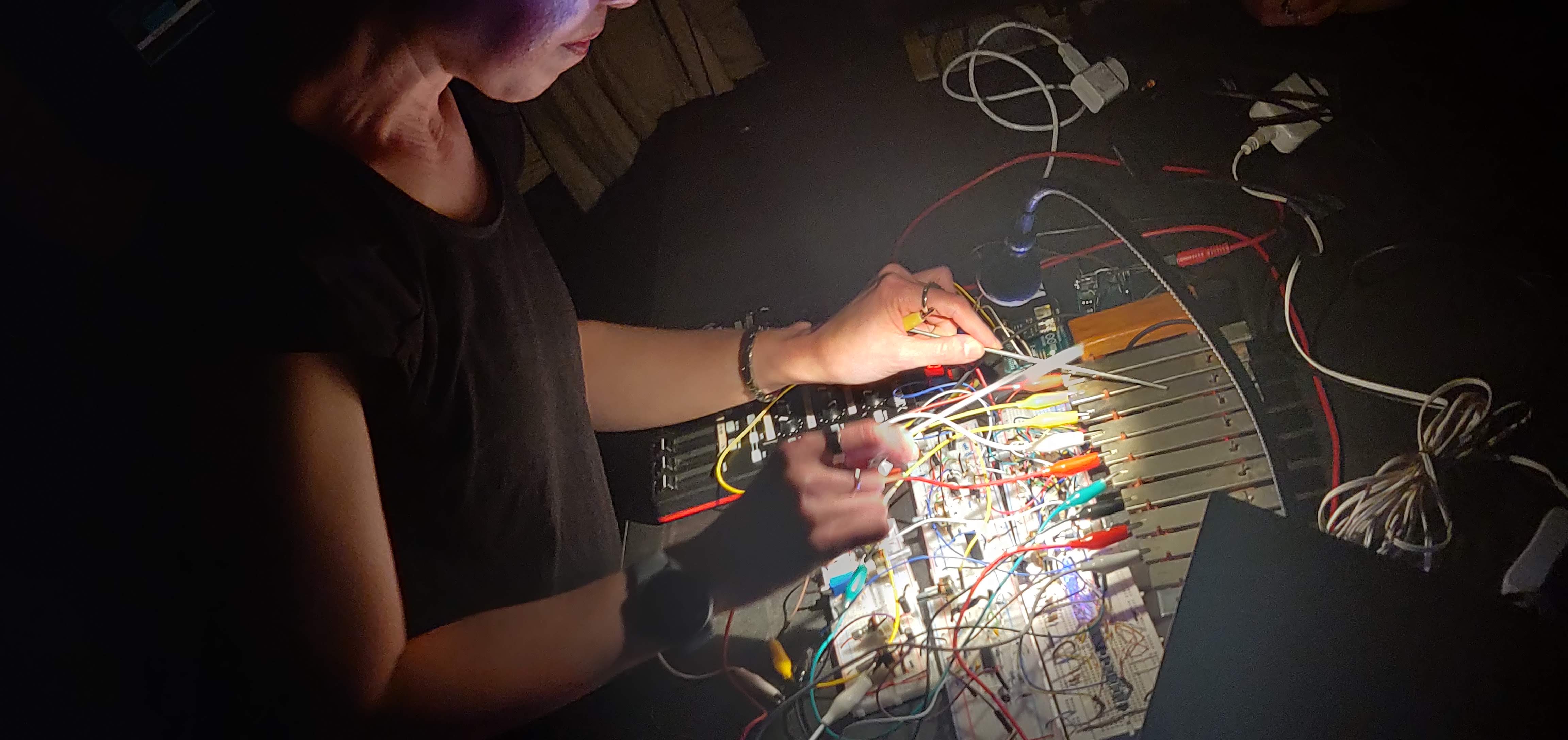Listening to machines and algorhythmics
Section outline
-
-
Here is a little digital instrument for you which combines concepts we have learned early in the course about synthesis with our recordings. What the program does, is transfer the amplitude ie. loudness.of a field recordings to the pitch of a synthesizer. Can you still recognize the original sound? Can make a copy of the program and use your own recordings to drive the sound? Could you imagine some other computer program which takes data from one source and uses it to generate something new in some other context?
-
Here is another digital instrument for you which manipulates a recording at a sample level, typically 44100 per second, and distorts it in unusually ways. Does this kind of distortion remind you of sounds you have heard earlier somewhere? Try making a copy, uploading a few seconds of your own recording experiments, and change the line 4 to point to your file. Use the three sliders to make new sounds.
Watch out, this can get really loud and noisy!
-
Mace encountered this sound when riding the bike in Dortmund home from one of the Blaues Rauschen concerts. Can you recognize it? Does it cause some affect in you, and what could the sound mean? What do it's waveform and spectrum look like? How would you describe the sonic qualities of the sound? Tip: it's a field recording from the street.



